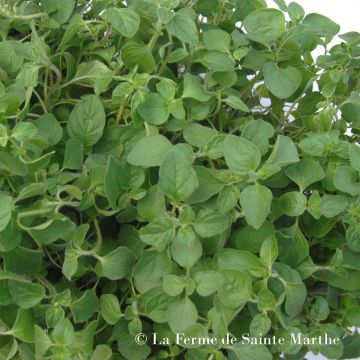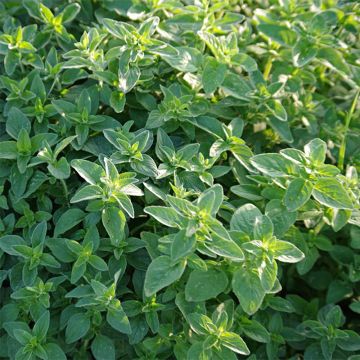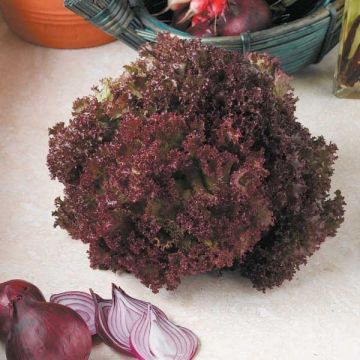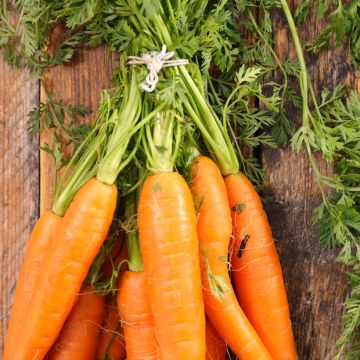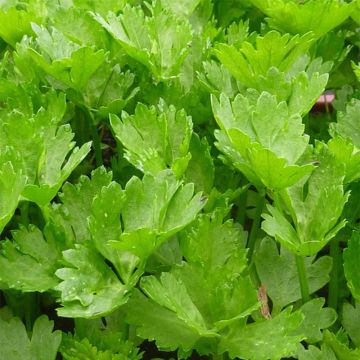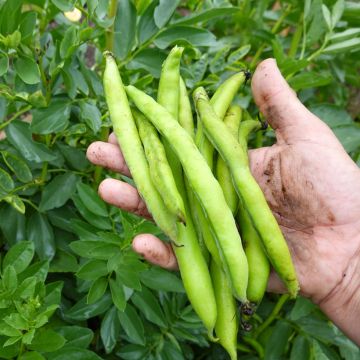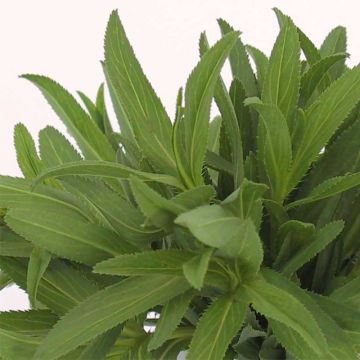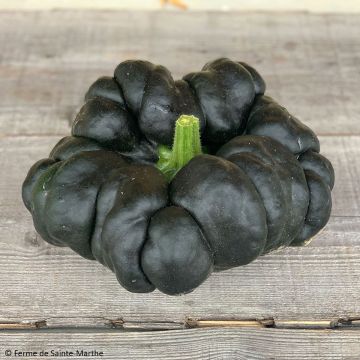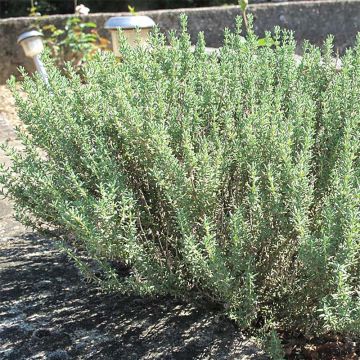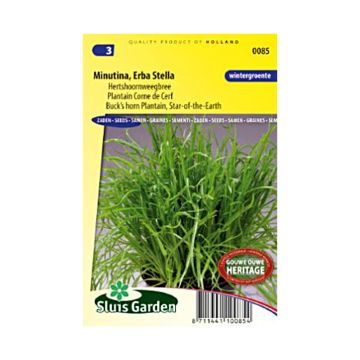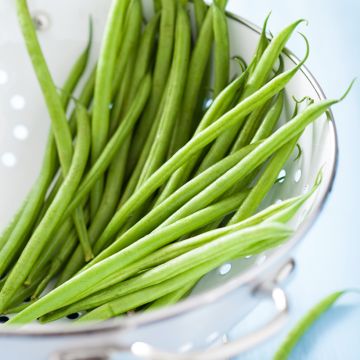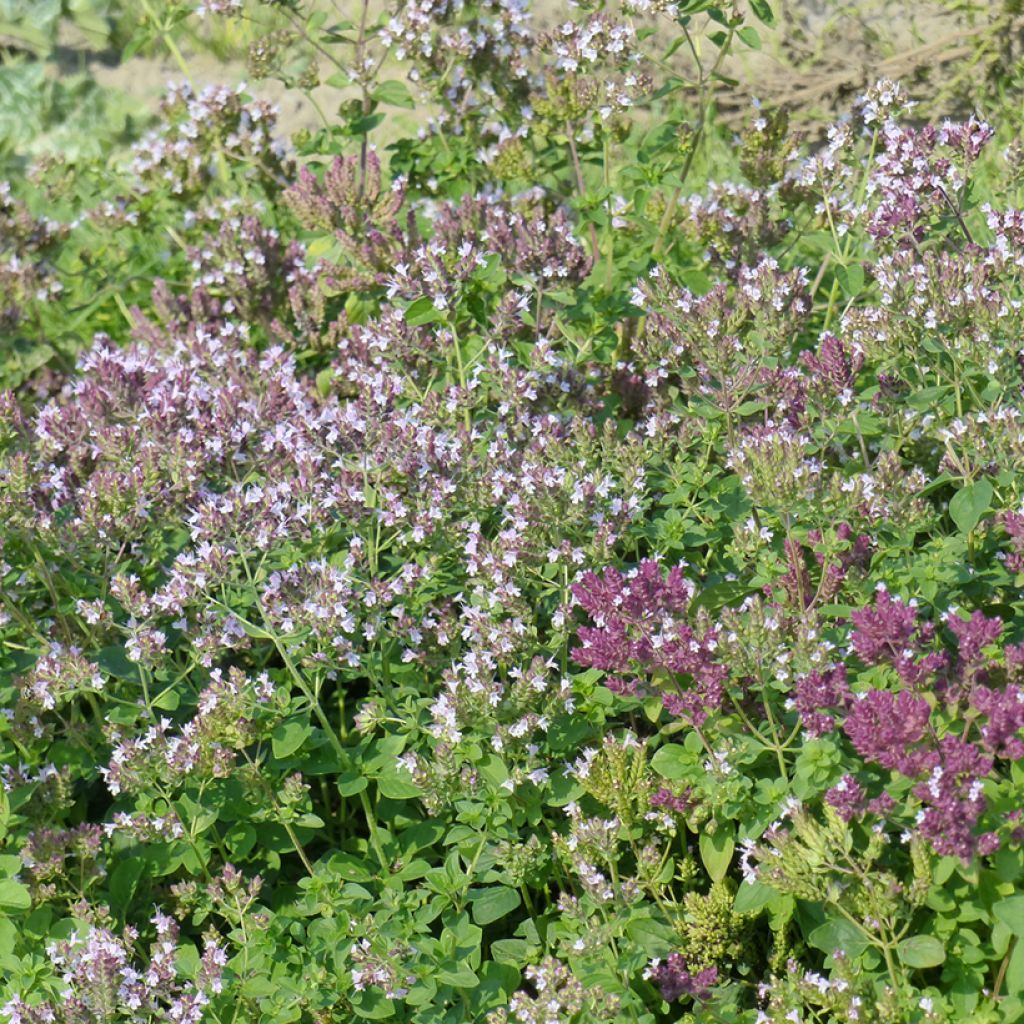

Origanum vulgare seeds - Oregano
Origanum vulgare seeds - Oregano
Origanum vulgare
Oregano, Wild Marjoram
Order in the next for dispatch today!
Dispatch by letter from €3.90.
Delivery charge from €5.90 Oversize package delivery charge from €6.90.
Current delivery delay: 1 day.
More information
This item is not available in your country.
Schedule delivery date,
and select date in basket
This plant carries a 6 months recovery warranty
More information
We guarantee the quality of our plants for a full growing cycle, and will replace at our expense any plant that fails to recover under normal climatic and planting conditions.
From €5.90 for pickup delivery and €6.90 for home delivery
Express home delivery from €8.90.
Does this plant fit my garden?
Set up your Plantfit profile →
Description
Common Oregano, in Latin Origanum vulgare, is a remarkably aromatic perennial plant, widely used in Mediterranean cuisine, irreplaceable in pizza sauce. Oregano is part of the Provence Herbs. It is a perfectly hardy plant and resistant to drought. Sowing from March to May.
Common oregano should not be confused with Marjoram, Origanum majorana. This oregano is a species of the Lamiaceae family, native to Western and Southern Europe, where it is sometimes found in the wild. It forms a fragrant clump about 50 cm high and wide. Its foliage consists of tiny, round to ovate, dark green leaves. Oregano blooms from June to September, depending on the climate. Its small pink to purplish flowers, honey-producing and nectar-rich, are grouped in small clusters. It is hardy down to -17°C in well-drained soil.
Oregano is an aromatic plant that is easy to grow in the sun in poor, light, even rocky, very well-drained soils, even limestone. If your soil is rather wet and clayey, we recommend growing it in a pot or in a rock garden.
Harvest: Oregano is harvested from May to October by cutting stems with scissors.
Storage: Oregano is traditionally preserved by drying. It is a simple and quick process that you can replace with freezing if you find it more convenient.
The gardener's tip: In the garden, plant some herbs like oreganos, thymes, common sage, and rosemary in your perennial beds or even in the rock garden. It's charming and their fragrance is often repellent to insects that might attack slightly sensitive plants like roses.
Report an error about the product description
Flowering
Foliage
Plant habit
Botanical data
Origanum
vulgare
Lamiaceae
Oregano, Wild Marjoram
Western Europe
Other Oregano Marjoram seeds
Planting and care
Sow oregano from March to May at a temperature ranging from 13 to 16°C. Germination generally takes 18 to 24 days.
Sow in a tray or pot filled with good seed compost, placed in full light. The seeds should be lightly buried and just covered with a pinch of compost or vermiculite. The tray should not be covered, as oregano is sensitive to humidity. Keep the substrate moist, but not waterlogged.
When the seedlings appear strong enough to handle, transplant them into pots and gradually acclimatise your young plants to cooler conditions.
Transplanting in the garden or in pots is done when the plants are well-developed; they may spend their first winter under a cold frame if needed.
Cultivation:
Oregano is a resilient and easy-to-grow herb. It thrives in sunny locations and prefers poor, light, even rocky and well-drained soils. It doesn't mind limestone. If your soil is rather moist and clayey, we recommend growing it in a pot, in a rockery, or on a small mound where it will thrive.
Sowing period
Intended location
This item has not been reviewed yet - be the first to leave a review about it.
Vegetable seeds
Haven't found what you were looking for?
Hardiness is the lowest winter temperature a plant can endure without suffering serious damage or even dying. However, hardiness is affected by location (a sheltered area, such as a patio), protection (winter cover) and soil type (hardiness is improved by well-drained soil).

Photo Sharing Terms & Conditions
In order to encourage gardeners to interact and share their experiences, Promesse de fleurs offers various media enabling content to be uploaded onto its Site - in particular via the ‘Photo sharing’ module.
The User agrees to refrain from:
- Posting any content that is illegal, prejudicial, insulting, racist, inciteful to hatred, revisionist, contrary to public decency, that infringes on privacy or on the privacy rights of third parties, in particular the publicity rights of persons and goods, intellectual property rights, or the right to privacy.
- Submitting content on behalf of a third party;
- Impersonate the identity of a third party and/or publish any personal information about a third party;
In general, the User undertakes to refrain from any unethical behaviour.
All Content (in particular text, comments, files, images, photos, videos, creative works, etc.), which may be subject to property or intellectual property rights, image or other private rights, shall remain the property of the User, subject to the limited rights granted by the terms of the licence granted by Promesse de fleurs as stated below. Users are at liberty to publish or not to publish such Content on the Site, notably via the ‘Photo Sharing’ facility, and accept that this Content shall be made public and freely accessible, notably on the Internet.
Users further acknowledge, undertake to have ,and guarantee that they hold all necessary rights and permissions to publish such material on the Site, in particular with regard to the legislation in force pertaining to any privacy, property, intellectual property, image, or contractual rights, or rights of any other nature. By publishing such Content on the Site, Users acknowledge accepting full liability as publishers of the Content within the meaning of the law, and grant Promesse de fleurs, free of charge, an inclusive, worldwide licence for the said Content for the entire duration of its publication, including all reproduction, representation, up/downloading, displaying, performing, transmission, and storage rights.
Users also grant permission for their name to be linked to the Content and accept that this link may not always be made available.
By engaging in posting material, Users consent to their Content becoming automatically accessible on the Internet, in particular on other sites and/or blogs and/or web pages of the Promesse de fleurs site, including in particular social pages and the Promesse de fleurs catalogue.
Users may secure the removal of entrusted content free of charge by issuing a simple request via our contact form.
The flowering period indicated on our website applies to countries and regions located in USDA zone 8 (France, the United Kingdom, Ireland, the Netherlands, etc.)
It will vary according to where you live:
- In zones 9 to 10 (Italy, Spain, Greece, etc.), flowering will occur about 2 to 4 weeks earlier.
- In zones 6 to 7 (Germany, Poland, Slovenia, and lower mountainous regions), flowering will be delayed by 2 to 3 weeks.
- In zone 5 (Central Europe, Scandinavia), blooming will be delayed by 3 to 5 weeks.
In temperate climates, pruning of spring-flowering shrubs (forsythia, spireas, etc.) should be done just after flowering.
Pruning of summer-flowering shrubs (Indian Lilac, Perovskia, etc.) can be done in winter or spring.
In cold regions as well as with frost-sensitive plants, avoid pruning too early when severe frosts may still occur.
The planting period indicated on our website applies to countries and regions located in USDA zone 8 (France, United Kingdom, Ireland, Netherlands).
It will vary according to where you live:
- In Mediterranean zones (Marseille, Madrid, Milan, etc.), autumn and winter are the best planting periods.
- In continental zones (Strasbourg, Munich, Vienna, etc.), delay planting by 2 to 3 weeks in spring and bring it forward by 2 to 4 weeks in autumn.
- In mountainous regions (the Alps, Pyrenees, Carpathians, etc.), it is best to plant in late spring (May-June) or late summer (August-September).
The harvesting period indicated on our website applies to countries and regions in USDA zone 8 (France, England, Ireland, the Netherlands).
In colder areas (Scandinavia, Poland, Austria...) fruit and vegetable harvests are likely to be delayed by 3-4 weeks.
In warmer areas (Italy, Spain, Greece, etc.), harvesting will probably take place earlier, depending on weather conditions.
The sowing periods indicated on our website apply to countries and regions within USDA Zone 8 (France, UK, Ireland, Netherlands).
In colder areas (Scandinavia, Poland, Austria...), delay any outdoor sowing by 3-4 weeks, or sow under glass.
In warmer climes (Italy, Spain, Greece, etc.), bring outdoor sowing forward by a few weeks.



































